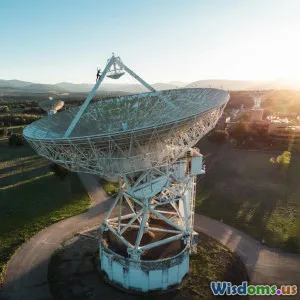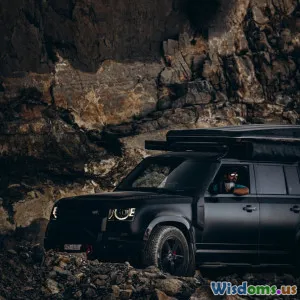
Do Solar Chargers Actually Work On Long Expeditions
9 min read Explore the realities and effectiveness of solar chargers during long expeditions with detailed insights and expert advice. (0 Reviews)
Do Solar Chargers Actually Work On Long Expeditions?
Embarking on a long expedition into remote wilderness often means facing unpredictable weather, varying daylight hours, and the critical need to keep devices charged. In recent years, solar chargers have become increasingly popular among adventurers and explorers as a sustainable, seemingly limitless energy source. But do solar chargers actually work reliably on long expeditions? This question has sparked considerable debate and curiosity within the outdoor and expedition community.
This article will explore the practical efficacy of solar chargers in the field, factors influencing their performance, real-world examples, and important considerations for choosing and using solar charging solutions effectively during extended adventures.
The Promise of Solar Charging on the Move
Solar chargers capitalize on photovoltaic technology to convert sunlight into usable electricity. Lightweight and portable solar panels paired with power banks or devices provide an off-grid power source that requires no fuel or infrastructure. Given the vast expanses of sunlight available on many remote routes—from deserts to mountain ridges—solar chargers seem like a natural energy companion.
They promise several compelling advantages:
- Sustainability: Renewable energy means a reduced environmental footprint compared to disposable batteries or fuel-powered generators.
- Weight and Convenience: Compact designs suit backpackers, hikers, and explorers who carry all their gear.
- Independence: Access to electricity without relying on electrical grids or fuel resupply points.
However, the realities of extended outdoor use are rarely as simple as marketed.
Understanding Solar Charger Performance Factors
Effective solar charging is heavily influenced by numerous variables:
1. Sunlight Availability and Weather Conditions
On long expeditions across varied terrain and climates, sunlight intensity fluctuates dramatically. Cloud cover, dense forests, morning/evening low-angle sun, and seasonal changes can reduce solar panel output by 50% or more. For instance, overcast conditions common in mountainous regions can drop charging rates to a trickle, prolonging recharge times.
Example:
During a three-week trek through the Scottish Highlands, adventurers reported solar panel efficiencies drastically reduced by persistent cloud cover and short daylight hours in early spring.
2. Panel Efficiency and Size
Solar technology ranges from compact, foldable panels (around 5W to 15W output) to larger suitcase-sized units putting out 50W or more. Efficiency improves with newer monocrystalline panels, but size and weight considerations limit how large panels can be packed.
Higher wattage panels nearly double the charging speed but increase bulk and weight—a serious consideration for ultralight hikers.
3. Battery Storage Capacity
Devices don’t always draw power directly from solar panels; they often rely on intermediary battery packs. A high-capacity power bank ensures energy harvested during peak sunlight hours is stored for use during night or cloudy times. Having a reliable battery bank is crucial for continuous device use.
Many long-distance hikers recommend power banks of at least 20,000 mAh capacity capable of multiple smartphone or GPS device charges.
4. Power Consumption of Devices
The number and type of electronic devices dictate how often charging is necessary. A GPS unit has lower energy needs compared to smartphones streaming maps or using satellite communication devices, which can drain batteries rapidly.
Optimizing device power settings and minimizing unnecessary use can extend reserves and ease the burden on solar charging capacity.
5. User Behavior and Setup
Proper placement of solar panels towards direct sunlight, removing obstructions, and frequently repositioning panels are vital practices. Neglecting these habits can result in minimal energy gain, frustrating users expecting effortless charging.
During high-use periods, supplementing solar power with traditional methods, or carefully rationing device use, becomes important.
Real-World Cases: Successes and Challenges
The Appalachian Trail Through-Hike Experience
A large segment of thru-hikers on the Appalachian Trail—an epic 2,190-mile journey—rely on solar chargers as part of their energy toolkit. Many use compact foldable 10W panels paired with high-capacity power banks.
- Success: Sunny days in open stretches yield efficient charges for GPS and smartphones.
- Challenge: Prolonged rain and heavy foliage reduce solar input significantly, requiring alternative charging stops at hostels or resupply points.
Arctic Exploration Expeditions
Explorers in polar regions face extreme low-angle sun and unpredictable weather. Larger and more robust polycrystalline panels supplement their limited solar availability, but heavy reliance on solar energy alone is impractical during polar night periods. Here, solar chargers function as a supplemental source, not a sole power solution.
Desert Trekking in the Sahara
The Sahara Desert provides intense, direct sunlight making it an ideal environment to maximize solarcharger efficiency. Adventurers have reported consistent device power availability with mid-range solar panels, proving high solar efficiency zones favor this technology.
Tips for Maximizing Solar Charger Effectiveness on Long Expeditions
1. Invest in High-Quality Panels and Batteries
Choose panels that balance wattage, weight, and durability, and pair them with reliable large-capacity power banks capable of multiple charges.
2. Monitor Weather and Plan Charging Around Optimal Sunlight
Track daily weather forecasts if possible, and charge devices during peak sunlight hours. Utilize breaks to maximize panel exposure.
3. Minimize Device Power Usage
Put devices in power-saving modes, turn off background services, and restrict screen use to essential functions to prolong battery life.
4. Position Panels Properly
Angle panels perpendicular to the sun, avoid shadows, and move them regularly to follow the sun’s course.
5. Always Have Backup Charging Options
Carry portable fuel-based battery packs or plan resupply points where conventional charging is possible to hedge against extended periods of low solar input.
Expert Insight
Lee Robinson, an experienced outdoor gear specialist, notes, "Solar chargers are a fantastic complementary energy source if planned meticulously. They shouldn’t be the expedition’s only energy supply, but their role as a zero-emission option cannot be overstated."
Conclusion: Do They Really Work?
Solar chargers do work on long expeditions—but with important caveats. Their effectiveness is closely tied to environmental conditions, user practices, and technology choices. While they provide invaluable sustainable energy, they are usually not a standalone solution for continuous power needs on extended journeys with variable weather.
The key is understanding solar charger limitations and integrating them intelligently with power banks, device management, and backup strategies. For adventurers prepared to optimize conditions and incorporate hybrid solutions, solar chargers unlock an unprecedented level of off-grid independence and environmental responsibility.
In sum, with the right gear, mindset, and planning, solar chargers can indeed power your long expeditions, powering not just your devices but a more sustainable future for exploration.
Ready to embrace solar power in your adventures? Research your route’s weather, invest wisely in quality solar gear, and let the sun fuel your next journey!
Rate the Post
User Reviews
Popular Posts

















